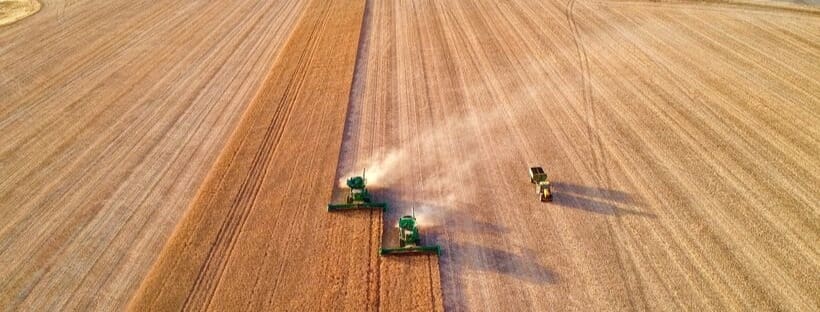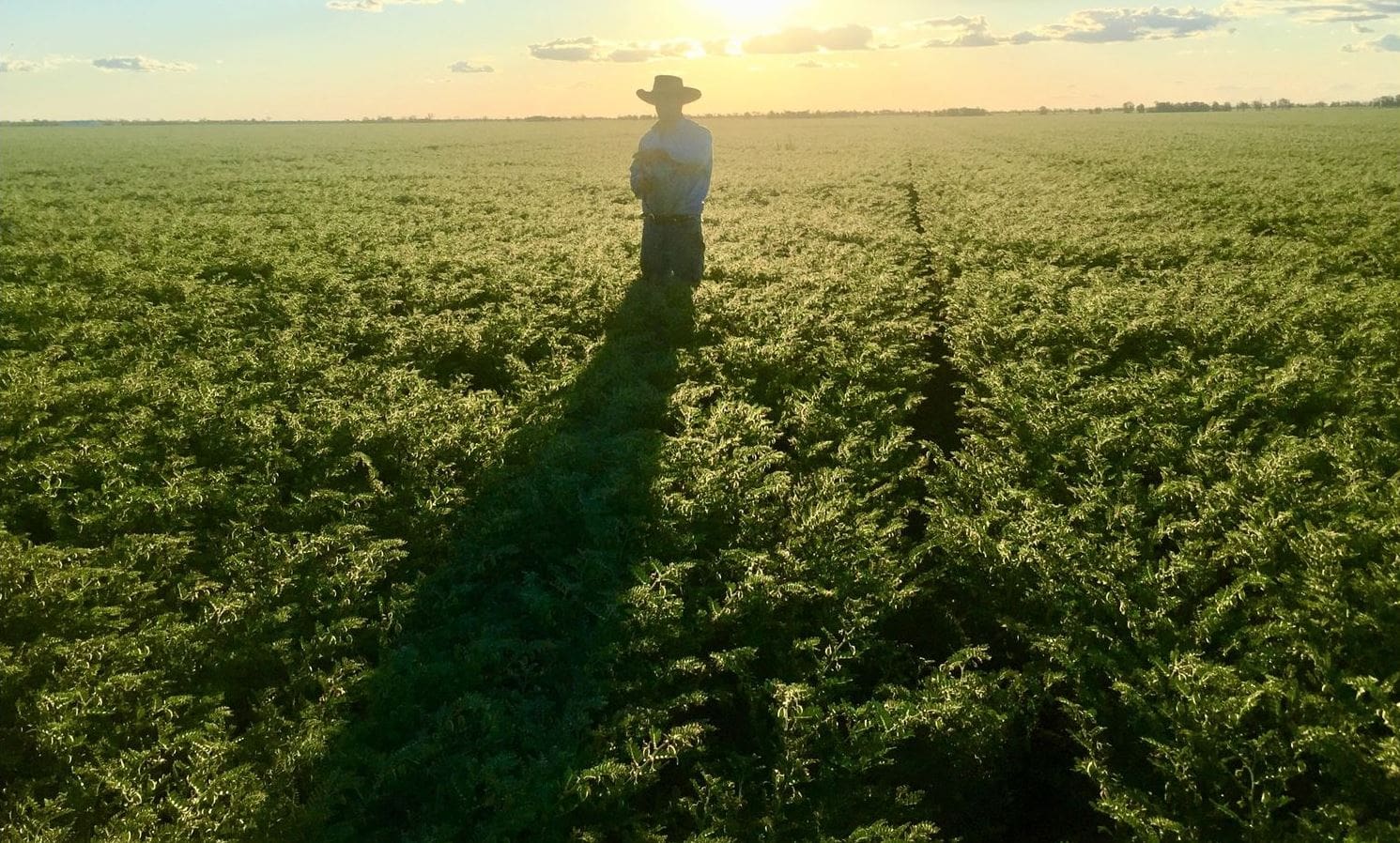
Rural Bank’s 2020 report shows the value of farmland in Western Australia rose sharply in 2019. Photo: CBH Group
THE median price of Australian farmland increased by 13.5 per cent in 2019, the sixth consecutive year of growth, according to Rural Bank’s annual Australian Farmland Values 2020 report.
The report says Australian farmland has emerged as a stable and consistent driver of agricultural value over the past decade, despite drought, bushfires and floods challenging the sector’s resilience.
Western Australia, with a record year of growth of 28.2pc from 2018, posted the strongest result, while South Australia, New South Wales, Victoria and Tasmania also posted gains in value.
Queensland saw a decline of 0.8pc after a significant increase in 2018 of 15.7pc, and Northern Territory values fell 53.9pc.
Growth in value was offset by a decline in transaction numbers, down 13.2pc in 2019 to the lowest level in the past 25 years.
However, land with consistent access to water outperformed the market, showing climate risk and reliable rainfall has continued to drive investment and value.
| Median price growth | Transaction volume growth | |
| New South Wales | +17.2 | -19.8 |
| Queensland | -0.8 | -7.8 |
| South Australia | +18.4 | -8.3 |
| Victoria | +12.1 | -12.9 |
| Tasmania | +11.1 | -5.8 |
| Western Australia | +28.2 | -4.6 |
| Northern Territory | -53.9 | -36.2 |
| National | +13.5 | -13.2 |
Table 1: Growth in 2019 as compared with 2018 as a percentage. Source: Rural Bank
Rural Bank chief executive officer Alexandra Gartmann said the report showed the remarkable consistency farmland offered as an asset class, particularly if people looked beyond short-term volatility and seasonal vagaries.
“We saw another year of value growth in 2019 across almost every state and territory, demonstrating not only the underlying strength of agriculture’s base asset in farmland, but of the sector overall,” Ms Gartmann said.
“While land values change from year to year, Australian farmland has delivered an average compound annual growth of 7.5pc over the past 20 years.”
Ms Gartmann said Rural Bank’s Australian Farmland Values 2020 report uncovered significant changes over the past 25 years and two clear long-term trends – higher values and fewer transactions.
“These are trends that we expect will continue.
“While farmers are grappling with new challenges from the COVID-19 pandemic and the ongoing impact of drought and bushfire, agriculture, as an essential industry, has a long track record of getting through difficult times such as these.”
The annual Australian Farmland Values report tracks every farmland sale over the past 25 years, providing detailed insights into farmland values across Australia.
The report drew on more than 262,000 transactions accounting for 303.9 million hectares of land in the calendar year 2019.
State-by-state summary
NSW
Rural Bank head of sales east Jonathon Hewitt said severe drought conditions across the state led to a significant reduction in listings last year.
“This resulted in transaction volume hitting its lowest level of the 25 years analysed.
“Most of the decline came from the Northern and Central regions, particularly at the lower-value end of the market.”
Mr Hewitt said fewer low-value transactions resulted in strong growth in median price per hectare across most regions.
“Reliable, good quality properties that did list were met with solid demand and sold well at a local level.
“Grazing properties were in high demand in southern regions of the state, driven by favourable commodity prices and a lack of listings.”
- Median price per hectare rose 17.2pc in 2019, the sixth consecutive year of growth;
- The area of farmland traded in 2019 across the state was approximately 1.35 million hectares (Mha), down 14.5pc from 2018;
- The total value of NSW farmland traded in 2018 was approximately $3.1 billion, a decrease of 9.5pc from 2018;
- Northern NSW was the top-performing region in 2019, reporting a growth of 23.7pc in median price per hectare.

The Noble Park aggregation at Crooble in northern NSW listed last year with CBRE. Photo: Colley family
Queensland
Mr Hewitt said prolonged drought in Queensland led to a reduction in transaction volume, which dropped to an eight-year low, largely driven by the southern region.
There was a slightly higher percentage of low-value transactions compared to 2018.
“This was due to increased activity at the lower end of the market in central, west and northern Queensland.”
Mr Hewitt said this caused the state median price per hectare to ease.
“In contrast, there were many examples of record prices at a local level.
“Properties with exceptional improvements were highly sort after in every region, driven by fewer listings and strong underlying demand.”
- The area of farmland traded across Queensland in 2019 was approximately 4.1Mha, down 5.9pc from 2018;
- Total value of Queensland farmland traded in 2019 was approximately $2.5 billion, up 2.9pc from 2018;
- South Queensland was the top-performing region in 2019, reporting a growth of 14.5pc in median price per hectare, while west and central regions fell 11.7pc and 9.9pc respectively.
Victoria
Victoria had its fourth consecutive year of growth in median price per hectare in 2019.
Contributing to the increase in median was a decrease in the number of transactions, whilst strong demand remained.
“North-west Victoria and the Gippsland regions experienced the greatest declines in transaction volume,” Mr Hewitt said.
“Geographical risk was a factor that was front of mind, as an increase in the need for water security and diversification of location increased interest in irrigated and high rainfall municipalities.
“Low interest rates have led to a higher number of properties purchased rather than leased, these properties were predominately off-market transactions between lessee and landowner.
“Considering the current economic environment purchasing rather than leasing is expected to continue.”
- Victoria’s median price per hectare rose 12.1pc in 2019, resulting in the fourth year of consecutive growth;
- Victoria’s area of farmland traded was approximately 166,215ha, down 16.2pc from 2018;
- The total value of Victorian farmland traded in 2019 was approximately $1.05 billion, down 4.2pc from 2018;
- North West Victoria saw the largest year-on-year increase in median price per hectare up by 31.9pc, while Gippsland saw a decrease of 5.9pc.
South Australia
Rural Bank head of sales west James Robinson said a significant driver of higher land values in South Australia in 2019 was stronger demand from
farmers seeking to expand and diversify operations.
“Increased interstate interest has been an element of this stronger demand,” Mr Robinson said.
“This trend was particularly evident in the south-east region, where graziers sought land for greater certainty for feed requirements.
“Strong commodity prices and a low interest rate environment have been supportive of stronger intentions to expand enterprises.”
The south-east region recorded the strongest growth with the median price increasing by 23.4pc, while the Yorke Peninsula and north region recovered from a decline in 2018 recorded a 21.5pc increase.
- South Australia’s median price per hectare in South Australia rose 18.4pc in 2019, and contributed to a 67.7pc increase over the past four years;
- An estimated 218,610ha of farmland was traded in 2019, down 20.5pc from 2018;
- The number of transactions fell 8.3pc in 2019 to 693. Despite this, the number of transactions remains 1.9pc above the average of the past 10 years;
- The total value of farmland traded in South Australia in 2019 was $756.8 million, down 2.1pc from 2018.
Tasmania
Rural Bank senior agribusiness relationship manager Dean Lalor said last year was hallmarked by greater demand than supply for Tasmanian rural properties.
“With this demand, Tasmania has again experienced consistent growth in rural values.
“The demand has been driven by international, national and local producers recognising the value of high irrigation surety, access to markets, stable government coupled with confidence in commodity pricing.”
- The median price per hectare of farmland in Tasmania increased by 11.1 per cent in 2019 after a decline of 5pc in 2018;
- An estimated 29,004 hectares of farmland was traded in 2019, down 4.3pc from 2018;
- The total value of farmland traded in 2019 was $224.7 million, up 1.5pc from 2018;
- The northern region experienced the largest increase in median price per hectare, recording a 26.1pc increase compared with 2018.
Western Australia
Rural Bank head of sales west James Robinson said WA land values hit record highs, following recent seasons of average to above-average growing seasons, high cereal prices and historically low interest rates.
“For the coming years, it is expected that land values in Western Australia will continue to follow the trend of the current 20-year compound annual growth rate,” Mr Robinson said.
- WA’s median price per hectare rose 28.2pc in 2019, compared with an increase of 3.8pc in 2018;
- The estimated number of farmland transactions fell in 2019 by 4.6pc to 701, almost 20pc below the 20-year average;
- The area of WA farmland traded in 2019 was approximately 536,000ha, up 2.7pc from 2018;
- Total value of WA farmland traded in 2019 was approximately $1.02 billion, up 10.5pc from 2018;
- The south coast region recorded the largest growth of 57.5pc in the median price per hectare, while the northern region fell 8.6pc when compared with 2018.
Northern Territory
Last year, cattle regions accounted for 33pc of transactions in the Northern Territory, up from 17pc in 2018.
The median price per hectare of farmland in the Northern Territory fell 53.9pc in 2019.
This followed an increase of 135.5pc in 2018.
Source: Rural Bank, a division of Bendigo and Adelaide Bank Limited.
Grain Central: Get our free daily cropping news straight to your inbox – Click here

HAVE YOUR SAY